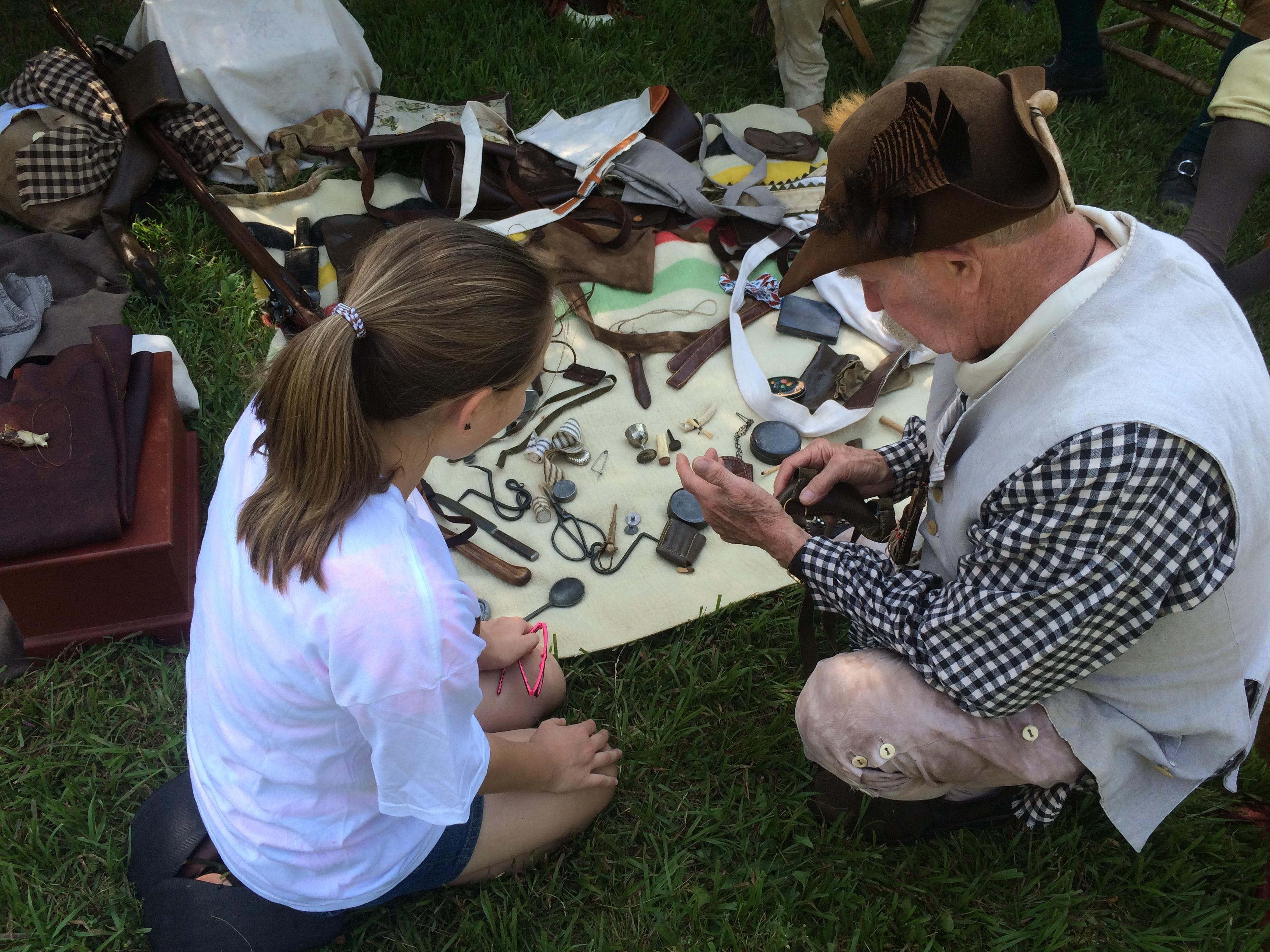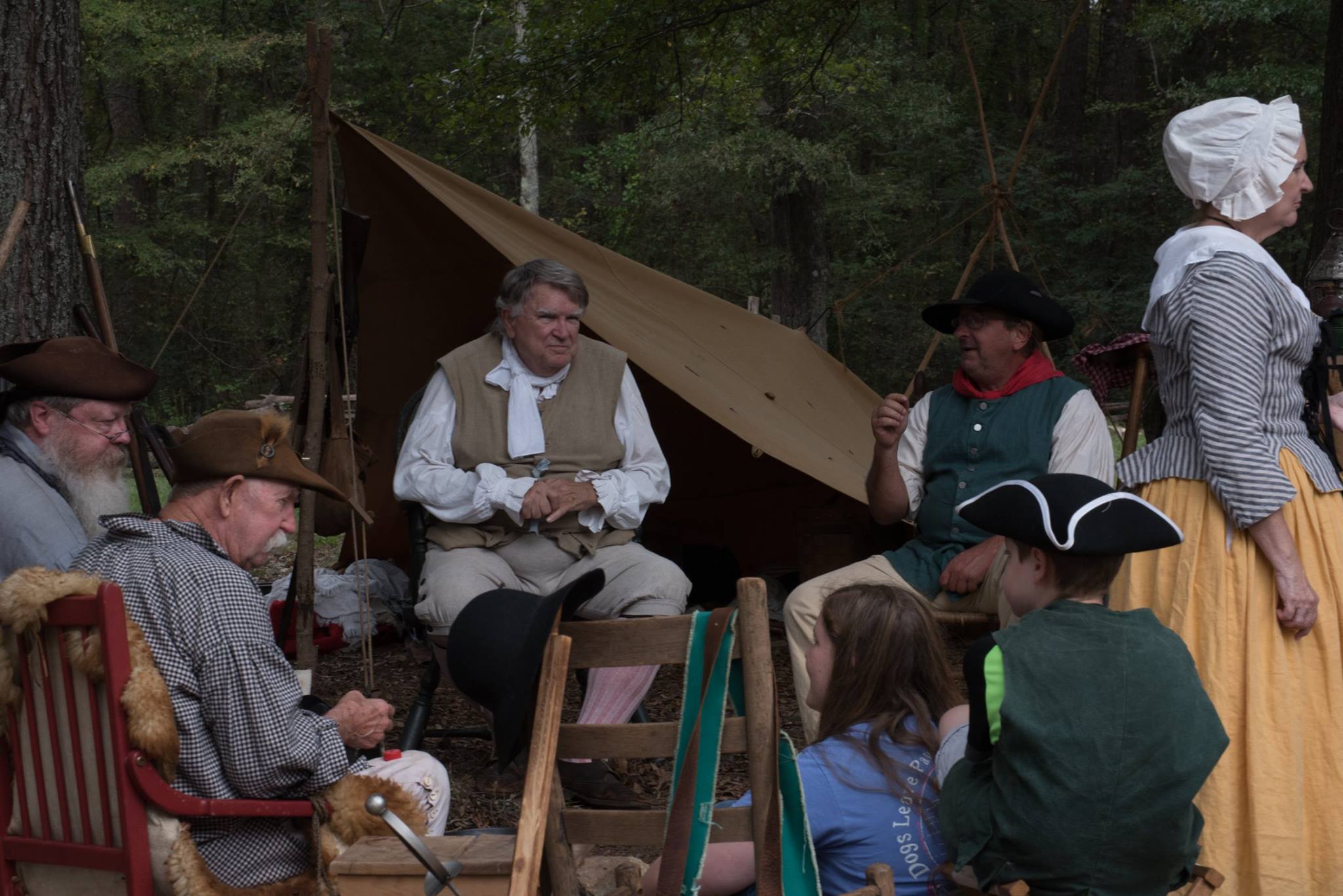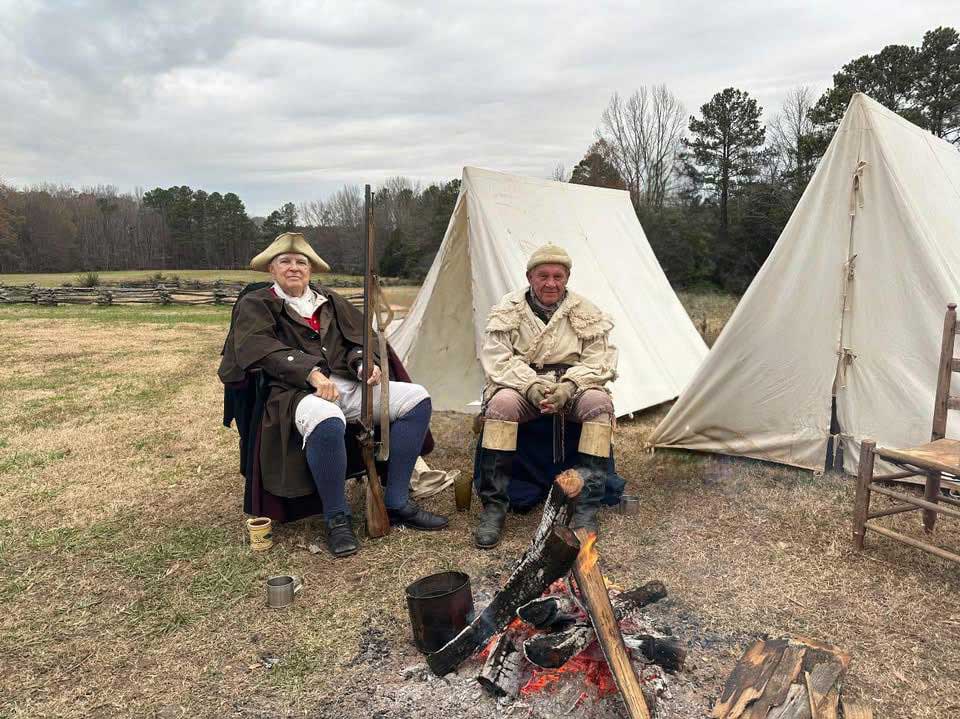About the New Acquisition Militia
The American Revolution was on the edge of collapsing following the surrender of Charles Town to British forces in May 1780. With the stroke of a pen, General Benjamin Lincoln, Commander of the Southern Continental Army, surrendered over 5,500 men to British forces.
Though many believed the war would soon be over, local armed militias with “Whig” (pro-independence) sympathies rose up throughout Georgia and Carolinas to rally the resistance against the British and their Tory sympathizers.
Resistance in the South Carolina Upcountry, characterized as “the Presbyterian Rebellion”, was a series of minor skirmishes and battles that took place from the late spring to the summer of 1780. Many, but not all of those engagements were concentrated in the extreme northern portion of the Camden District (present day Chester County) and the New Acquisition District (present day York County in SC). Scots-Irish Presbyterians dominated the population in those areas and the Scots-Irish and British possessed mutual disdain for each other. Many, but not all of the Scots-Irish living in those areas were eager to join the resistance movement when British forces threatened their lives and property.
The Whig militia forces in South Carolina, led by Brigadier General Thomas Sumter, General Francis Marion, General Andrew Pickens, and other able commanders, frustrated British attempts to consolidate their hold in the Carolinas. Their actions bought time for Washington and the Continental Congress to raise Continental forces to counter British forces. Though their first attempt to offer resistance under General Horatio “Granny” Gates was met with disaster at the Battle of Camden (August 6, 1780), their second attempt under the able-minded leadership of General Nathanael Greene (the “Fighting Quaker”) led to a successful campaign that resulted in the gradually decimation of Cornwallis’ Army through various means, ultimately leading to the Siege at Yorktown.
Take a step back into the past, relax and come hang out with us.

The New Acquisition Militia’s educational programs focus on this important part of the story of the American Revolution by providing context for the general public and school children engaged in learning about American history. We are a family friendly organization focused on education and encourage others to join as members to help with these programs. Also, we invite you to read the articles focused on the history of the American Revolution included in the sidebar.
See our schedule for areas in which we serve and please consider joining the NAM!


Research Blog
Fort Lacey
LACEY’S FORT Michael C. Scoggins, York County Historical Center, July 2002 Lacey’s Fort was constructed by Col. Edward Lacey of Chester County in 1780 near Quinn’s Road on Turkey Creek, in southwestern York County . The fort was also known as Fort Lacey , Lacey’s...
Correct Rifle Terminology in the 18th Century
Research by Robert I. McCann From: “A riffle Gun and what belongs to her” Wallace Gusler, Muzzle Blasts January 2003 (The gunsmith that made the Williamsburg gunsmithing program.) Joe and I both liked the article and in a discussion, Joe said that we ought to get it...
Clothing Sources
Nancy M. Sambitts York County Historical Center Clothing Inventory The following descriptions are from the Pennsylvania Gazette dated June 10, 1756: .A native Irishman, Hugh O’Daniel, appears to be 30 years of age, who broke out of the public jail wearing a pretty...
Christian Huck Biography
Michael C. Scoggins, York County Historical Center, July 2002 Christian Huck, commander of the Loyalist forces at the Battle of Huck’s Defeat, was born in one of the German states of Europe around the year 1748 and emigrated to America some time prior to the American...
Can you tell a Cat Whipper from a Cordwainer?
Robert I. McCann Colonial Craftsmen and the Beginnings of American Industry by Edwin Tunis The Johns Hopkins University Press, about $19.00 paperback This is just a good book! It outlines American craftsmen from the mid-18th century through the first quarter of the...
Brutality on the Frontier
by Brandon Lohr There have been several accounts of backwoodsmen and scouts upon the northwestern Virginia frontier. These accounts often tell of the lives and exploits of the “heroes” who saved the settlers of their respective areas from attacks from hostile...
